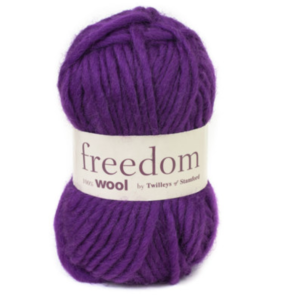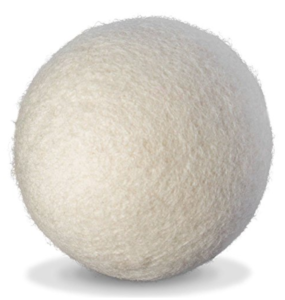Chemical Ingredients in Fabric Softeners/Dryer Sheets
I retyped this from a handout that someone provided me, excellent information, and I thought worthy of capturing it for quick reference. When people ask, how did I get cancer? Well, take a look at your home, and see what kind of hidden chemicals are in household products that are warranted safe by our government, but contain these ingredients.

What chemicals are in your household products?
Dirty Socks of household cleaning and other products
There are many potentially dangerous products used in the home. To list the chemicals in each of them and the health risks of each of these would produce a truly huge volume. We have chosen fabric softener as the prime illustrative example for a number of reasons.
- It is one of the most toxic products produced for daily household use. It has been found to be associated with numerous illnesses and chronic conditions.
- It is widely advertised and widely used.
- The effects of its toxicity are insidious; a user becomes “chronically maladapted” to it. The exposure is so constant that it can be difficult to connect the product with the signs of reactivity it causes. Neurotoxins, stimulant and irritant, used in these products are known to produce an addictive-type response that may cause the user to experience a feeling of pleasure when the product is directly inhaled. Regular users of fabric softeners (and perfumes) also often claim they “can hardly smell it”. This too is an effect of chemical ingredients on neural receptors. And
- The product is designed to impregnate fibres and slowly re-release for an extended period of time. This re-releasing affects the health anot only of the users, but the health of those around them.
Central Nervous System (CNS) toxin exposure symptoms include: dizziness, disorientation, nausea, headaches, mood swings, numbness in face or extremities, pain in neck or spine, memory loss, aphasia (difficulty speaking), confusion, irritability. CNS disorders include: Alzheimer’s, Parkinson’s, Dementia, Seizures, Multiple Sclerosis, Multiple Chemical Sensitivity Hyperactivity. Strokes, Attention Deficit Disorder, Sudden Infant Death Syndrome.
Risks of perfumes and Scented Products
The Chemicals listed below, (along with Methylenechloride, Ethanol, Formaldehyde and other petrochemicals and neurotoxins) are among the 4,000 chemical ingredients used in the manufacture of perfumes and scents. The US Environmental Protection Agency (EPA) collected samples of every perfume sold in North America in 1993. Every sample contained the chemical solvent Toluene (a proven carcinogen and neurotoxin designated as Hazardous waste worldwide). Many also contain chemicals to mimic the pheromones (sex hormones) of insects, musk ox, apes, and pigs. Sounds romantic doesn’t it? The health risks of these products are so varied and extreme it almost defies comprehension.
The following information contains a partial list of the chemical ingredients of fabric softeners and the potential effects of exposure to them as quoted from manufacturer’s’ Material Safety Data Sheets (MSDS).
Alpha-Terpineol: Causes*CNS disorders. Highly irritating to mucous membranes. Aspiration into lungs can produce pneumonitis or fatal edema. Lesser exposures can cause decreased circulation, headaches, depression of CNS and/or respiratory function, ataxia (loss of muscle coordination) behavioral changes. Prevent repeated or prolonged skin contact.
Benzyl Acetate: Carcinogenic. Vapours irritating to eyes and respiratory passages, exciting cough. In mice, pancreatic cancer, hyperemia of the lungs. can be absorbed through skin causing systemic effects. Do not flush to sewer system.
Benzyl Alcohol: Associate with CNS disorders. Irritation to upper respiratory tract. Can cause headaches, nausea, vomiting, dizziness, sudden drop in blood pressure, CNS depression, death due to respiratory failure.
Camphor: on **EPA’s Hazardous Waste list. Readily absorbed through bodily tissues. Avoid inhalation of vapours. Local irritant and CNS stimulant. Symptoms of dizziness, confusion, nausea, twitching muscles, confusion. Associated with CNS disorders.
Chloroform: on EPA’s Hazardous Waste List. Avoid contact with eyes, skin, clothing. Do not breathe vapours. inhalation can be fatal. Properties: Anesthetic, neurotoxic, carcinogenic. Chronic effects of exposure may include liver and/or kidney damage. Medical conditions aggravated by exposure: kidney disorders, liver disorders, heart disorders, skin disorders, allergic or respiratory conditions. May cause headache, nausea, vomiting, dizziness, drowsiness, irritation of respiratory tract, and loss of consciousness. Conditions to avoid: Heat.
Ethyl Acetate: On EPA’s Hazardous Waste List. Narcotic; may cause headaches narcosis, stupor. Irritation to eyes and respiratory tract. May cause anemia with leukocytosis and damage to liver and kidneys. Wash thoroughly after handling.
Limonene: Prevent contact with skin or eyes. Properties: irritant, sensitizer, carcinogenic. Always wash thoroughly after using, especially before eating, drinking apply cosmetics. Do not inhale.
Linalool: Narcotic. Associated with CNS disorders and respiratory disturbances. Attracts bees. in animal testing: ataxic gait, reduced spontaneous motor activity and depression, depressed heat activity. development of respiratory disturbances leading to death.
Pentane: Danger: Harmful if inhaled. Inhalation of vapour may cause headaches, nausea,vomiting, dizziness, drowsiness, irritation of respiratory tract and loss of consciousness. Contact can cause eye or skin irritation.
Make your own dryer balls!
Dryer balls work by keeping clothes from sticking together and fluffed up so the heat can dry them faster. The balls also “beat the clothes” and will make them softer as they tumble around.
Take a skein of wool yarn.
I have used a small starter ball of aluminum foil, but some prefer to not do that. And I will wrap the yarn around the foil into a ball that is like the size
of a baseball or a touch smaller

! I usually tie it off and wrap the end, poking it into the ball so it won’t unwind. Take an old nylon sock, and put it into the sock, and tie off the sock to form a nice tight wrapping around the ball, you can put many balls into the sock, tieing up each one with a knot until you run out of sock. Then toss in the washing machine. Hot works great, and may take several washings to get the wool to melt together. Unleash each roller ball by cutting it out of the sock, and then add your Essential oils of choice to the ball, one-two-or three drops, and toss into the dryer.
Other references:
https://www.ehaontario.ca/help-with.html
*Central Nervous System
**U.S.S Environmental Protection Agency



Hi! Thank you for this information. I found it while doing research for a person refuting these facts I had told them, which are exactly what you reiterated. Could you direct me to the MSDS you referred to?? Thanks so much again!
To find an MSDS sheet on a particular dryer sheet, you have to contact the particular company that you’re looking at, they don’t really provide them just because of the list of ingredients would give away their recipe. I did find a bounce list of ingredients, but they still hide behind “other ingredients” statements. Here is a website that you also can dive into: https://www.ewg.org/guides/cleaners/2669-BounceDryerSheetsFreeSensitive#.Wyf_chKpEeN Part of the problem is also related to who is controlling the message.